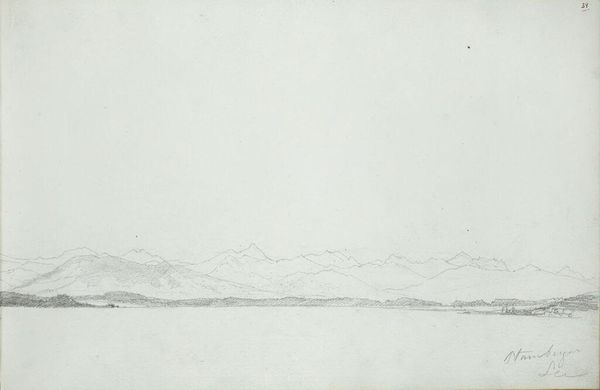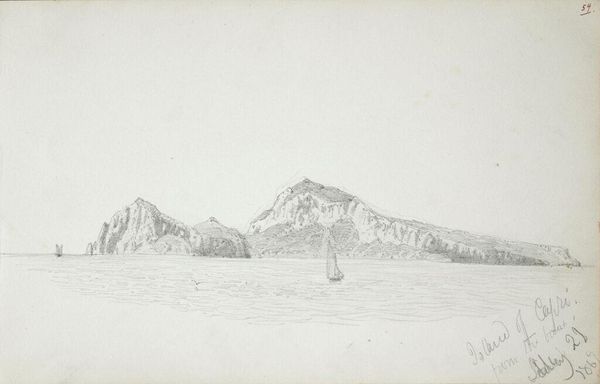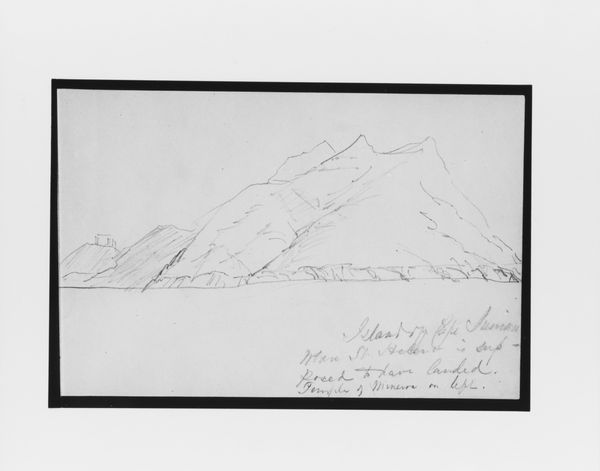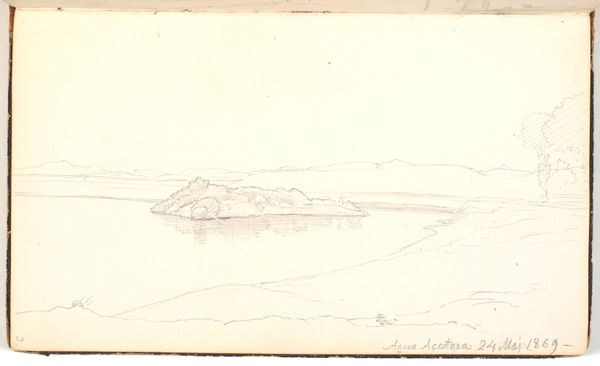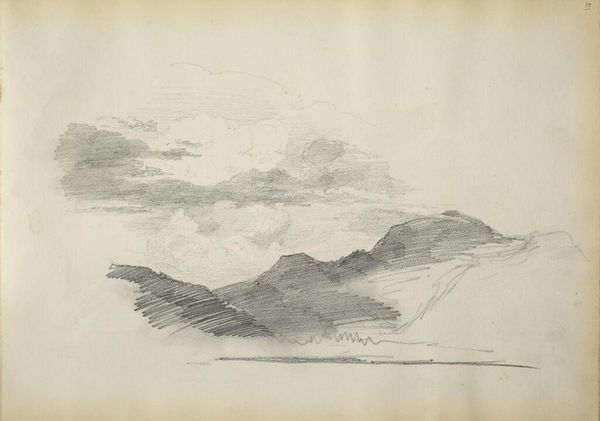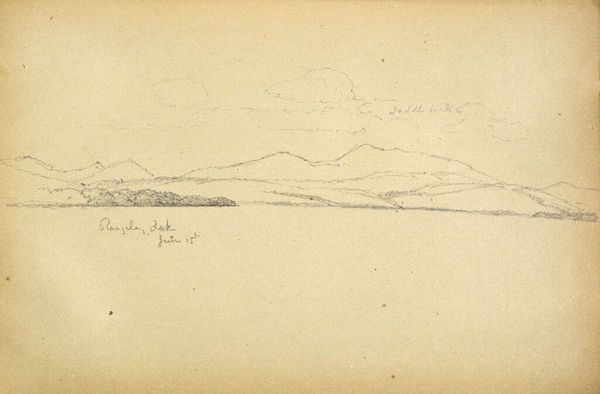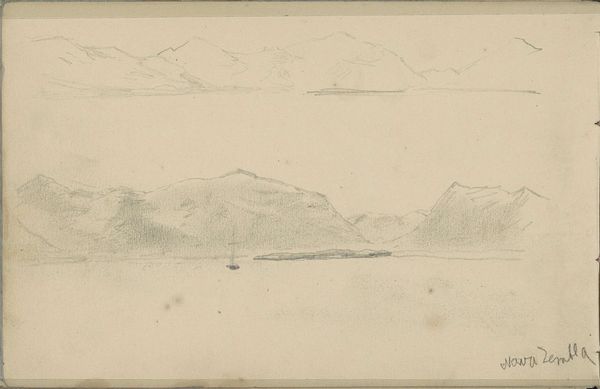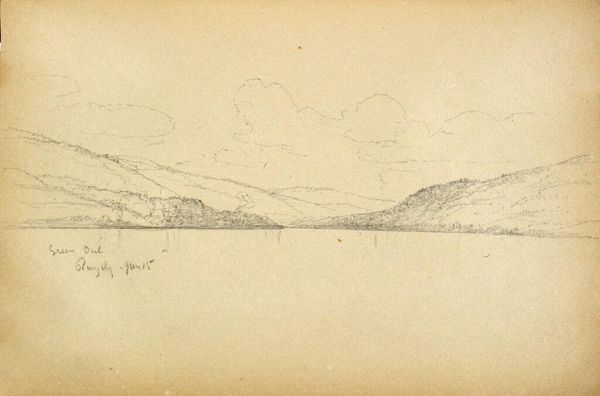
Dimensions: 5 1/4 x 8 1/4 in. (13.3 x 21 cm)
Copyright: Public Domain
Curator: This is "Coast of Asia Minor (from Sketchbook)" by Mary Newbold Sargent, created in 1904. You’ll notice it’s a watercolor and pencil drawing currently held at the Metropolitan Museum of Art. Editor: My immediate response is one of tranquility. The muted grays and blues create a hazy, almost dreamlike quality. It seems simple, yet incredibly evocative. What grabs me is the sparseness of the pencil marks and watercolor washes - they somehow imply more than they depict directly. Curator: I agree. There's a compelling tension between the sketch's simplicity and its representational effect. Sargent, coming from a wealthy background, used sketching as a method for quickly capturing the landscape; one that she could then share or even rework in larger exhibition paintings later. Consider the social aspect here - the landscape available as leisure and education through travel only for the wealthy. Editor: Absolutely. And how that wealth manifests in the materials themselves! Fine paper, expensive pigments—access shapes every mark she makes. One has to think about where the paper was made and what the journey from the paper mill was to the island. Also how she might’ve had a portable paint box made specifically for outdoor work? Curator: Exactly! These material conditions underscore the relationship between artistic creation, social status, and access to tools. What’s especially interesting for me is considering how Impressionism becomes attached to upper-class pastimes. We think of Monet and plein-air painting, and this aligns so closely, visually, with the culture surrounding the acquisition and consumption of such sketches by the privileged. Editor: It's a fascinating contrast. Sargent translates an immense geographic and historical location, Asia Minor, into this intimate format for an elite audience. How are we supposed to regard landscape and national identity through such an abstracted gaze? It seems incredibly powerful that such a quick rendering captures that very complex dynamic of observation and political space. Curator: Ultimately, by looking closer, we can see how the art world reflected and reinforced the values of its time. This artwork isn’t just about aesthetic appreciation, but about the production and distribution of images in a specific social framework. Editor: I suppose then, a seemingly innocent sketch becomes a microcosm of its age, demanding us to look closer at the world beyond the image itself.
Comments
No comments
Be the first to comment and join the conversation on the ultimate creative platform.





